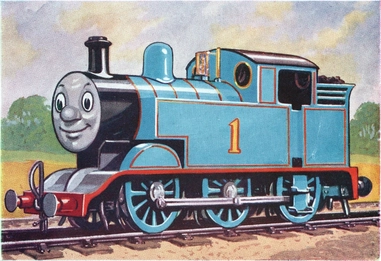The Box Tunnel is a railroad tunnel in England. It was designed by the famous engineer Isambard Kingdom Brunel and constructed between 1838 and 1841. It’s nearly two miles long, which made it the world’s longest railway tunnel when it opened. It was originally a controversial project, partly because the rock inside Box Hill wasn’t considered very suitable to tunnel through, and partly because of the steep gradient inside. It was a 1% grade, which was right at the limit of what steam trains of that era could manage. The Great Western Railway owned the tunnel and the tracks, and kept an extra steam engine waiting at the western (lower) end to help freight trains make the ascent. Even with two locomotives, it was a difficult climb in the age of steam.
It was well before the days of radio or telephones, so when the extra “banking” engine was assisting a freight locomotive up the hill they communicated by tooting their whistles in short coded sequences. Because of the railroad schedules, this usually happened at night. And there was someone listening.
About 200 yards from the western opening of the Box Tunnel is a house. It’s not a particularly unusual house, but nevertheless had a name, which was common in that area. The house was called Journey’s End. And the person listening was a nine-year-old boy who had moved there with his family in 1920. He was Wilbert Awdry, and even at nine years old, he loved trains. He later said “There was no doubt in my mind that steam engines all had definite personalities. I would hear them snorting up the grade and little imagination was needed to hear in the puffings and pantings of the two engines the conversation they were having with one another.”
Wilbert always remembered that, and 25 years later he told his son Christopher a story about two steam engines helping each other to pull and push a train up a steep hill. The steam engines in the story had distinct personalities, and even distinct names: Edward and Gordon. Not too long after he told the story, Awdry wrote it down. The episode of the hill wasn’t the whole story, though, and there was a third steam engine as well. A small one with a unique design. Most steam engines pulled a “tender” containing the water and fuel they needed, but there was another, less common design in which the water was carried on the locomotive itself. Those locomotives were called “tank engines,” and the third locomotive an Awdry’s story also had a personality and a name: Thomas. Thomas the Tank Engine.
Awdry’s book, The Three Railway Engines, was published in 1945 and immediately became very popular. So Awdry kept going, adding more stories to what came to be called The Railway Series. He kept going until 1972, when he’d written 26 of them. His son Christopher, who had just listened to the stories at first, added another 16. Awdry was keenly interested in real trains, and nearly everything in the Railway Series books was based on actual events and real-life locomotives. Even the location of the stories, which was on a railroad on the fictional Island of Sodor, came from something real. Awdry was an Anglican minister, and in 1950 visited the Isle of Man, which is of course a real place. But the Church of England’s designation of the religious administration of the area is called the Diocese of Sodor and Man. Awdry noted that there was an Isle of Man, but no Isle of Sodor, so he created one for his books, along with a whole railroad and set of stations. One of them is the station in the village of Dryaw — and if you rearrange the letters, Dryaw becomes Awdry. And the Skarloey Railway, the fictional railway on the Island of Sodor, is based on the Talyllyn Railway in Wales, where Awdry volunteered to help with restoration in 1952.
Aside from writing, Awdry built elaborate model railroad layouts that he exhibited and were mentioned in TV news shows in 1988. When the TV adaptation of the Railway Series books, Thomas and Friends, began in 1984, Awdry appeared on it more than once. There are at least two locomotives that have been named for him, and there’s a pedestrian bridge across rail lines in Chandlers Ford, a small Hampshire town — the bridge is dedicated to Awdry. After he passed away in 1997, a stained glass window depicting his stories was unveiled at St. Edmund’s Church in Norfolk. And of course millions around the world are familiar with Thomas the Tank Engine and his friends and adventures.

The first illustration of Thomas the Tank Engine by Reginald Payne in the mid-1940s. https://ttte.fandom.com/wiki/File:ThomasandGordonReginaldPayne1.JPG, Fair use, https://en.wikipedia.org/w/index.php?curid=73892993
